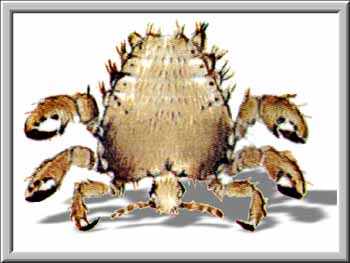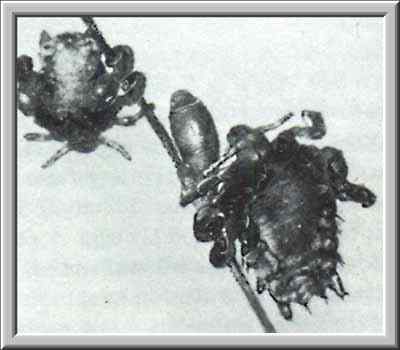
Phthirius
pubis
(The Crab Louse)
(The Crab Louse)
Well here we go...this is the unmentionable one ( my wife said to me, "you can't put that on the internet", who can't).The Crab louse...as the picture indicates, the crab louse is almost as broad as long, and its claws are extraordinarily well developed and together with the shape of the body give it a crab like appearance. It's preferred habitat is among the body hairs and particularly in the pubic region. The large claws are particularly well adapted for gripping these strong hairs. Crab lice can also occur in the armpits, in beards and sometimes on eyelids and eyebrows, and indeed they have even been found among the fine hair on the heads of infants.The female crab louse lays about 25 eggs, each firmly attached to it's own hair. The development from egg to adult takes about 3 weeks. Crab lice are sedentary. Having found a suitable place a louse will seize the host's hair, bore into the skin with its mouthparts and suck blood several times in succession, with only short intervals. It will die within a day if removed from its host. There is no doubt that crab lice are mostly transmitted from one human to another during intimate relationships. There are however, records of small children carrying crab lice, so they can be transmitted by other means....
Treatment for this problem usually consists of shaving off the hair in the affected region and an intensive course of hygine, suffice to say it isn't very nice, especially if other people find out that you have a problem....!
A pair of Crab Lice with an egg firmly attached to a hair
